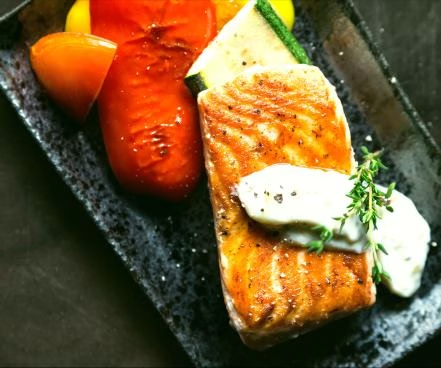Fish is a very healthy food. Regularly eating fish can help reduce the risk of heart disease, stroke, depression, and other related conditions. Eat fish at least one or two times a week. Today, we’ll explore several basic cooking methods, how they affect fish nutrients, and which cooking methods maximize nutrient retention.
Grilling Fish
When grilling fish, the high temperatures in the fish’s muscle tissue promote the formation of certain harmful substances, particularly heterocyclic amines and polycyclic aromatic hydrocarbons (PAHs).
To reduce the formation of these harmful substances, it’s recommended to avoid direct contact with heat when grilling fish and to minimize the grilling time. Additionally, marinating the fish before grilling can help reduce the formation of heterocyclic amines and PAHs.
Steaming Fish
Steaming fish in a rice cooker or other similar cooking method primarily uses high heat and steam to cook the fish thoroughly, as it requires minimal oil.
Therefore, it’s less likely to cause fat degradation. Furthermore, compared to other cooking methods, steaming uses a relatively low temperature, preserving more nutrients like omega-3 fatty acids and reducing harmful substances like heterocyclic amines and polycyclic aromatic hydrocarbons.
Fish Pan-fried or Deep-fried
Fish pan-fried or deep-fried is also a cooking method that uses high temperatures to cook the fish. The main difference between pan-frying and deep-frying is that the amount of oil used is relatively small.
For this reason, pan-frying is considered slightly healthier than deep-frying. However, pan-frying or deep-frying fish with oils high in omega-6 fatty acids may cause inflammation.
Fish absorbs oil quite readily, especially lean fish, which absorbs oil more readily than oilier fish.
Fish pan-fried or deep-fried at high temperatures destroys its omega-3 fatty acids more readily than fish cooked in other ways. However, this also depends on the type of fish. For example, experiments with herring have shown that even when deep-fried at high temperatures, most omega-3 fatty acids are retained. However, other nutrients, such as vitamin D, may still be significantly reduced.
Furthermore, the high temperatures of pan-frying or deep-frying may also promote the production of heterocyclic amines, polycyclic aromatic hydrocarbons, and advanced glycation end products. It is recommended to use oils that are high in nutrients and can remain stable at high temperatures when pan-frying or deep-frying fish, and pan-frying is preferred over deep-frying whenever possible.
Oven-baked fish
Oven-baking fish reduces the destruction of omega-3 fatty acids compared to pan-frying or deep-frying, and retains most of the vitamin D.
Baking fish retains almost all of its vitamin D, but deep-frying reduces it to only about 50%. When oven-baking fish, it is recommended to use healthier, heat-resistant oils such as olive oil.
Which cooking method preserves the most nutrients?
The type of fish, cooking method, cooking time, and cooking oil used can all affect the nutritional content of the finished dish. Generally speaking, oven-baking or steaming fish preserves more nutrients and is the recommended cooking method. So, which cooking method is least recommended? Deep-frying, which is more likely to cause nutrient loss, is therefore less recommended.


Leave a Reply